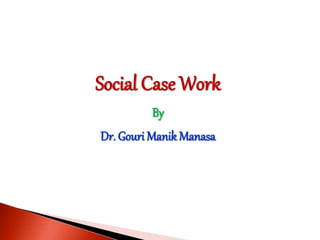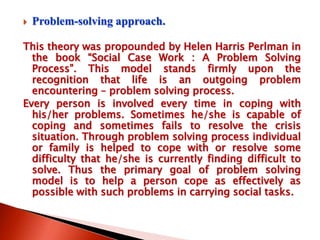Social case work aims to help individuals adjust and develop satisfying human relationships through a one-on-one relationship between a social worker and client. It originated in the US in the early 20th century and was influenced by psychoanalysis. Social case work involves studying the client's problems, assessing contributing factors, and providing interventions and treatment to help the client cope more effectively. Key aspects of case work include building rapport, understanding internal and external problems, strengthening the client's ego, and developing their internal resources.































